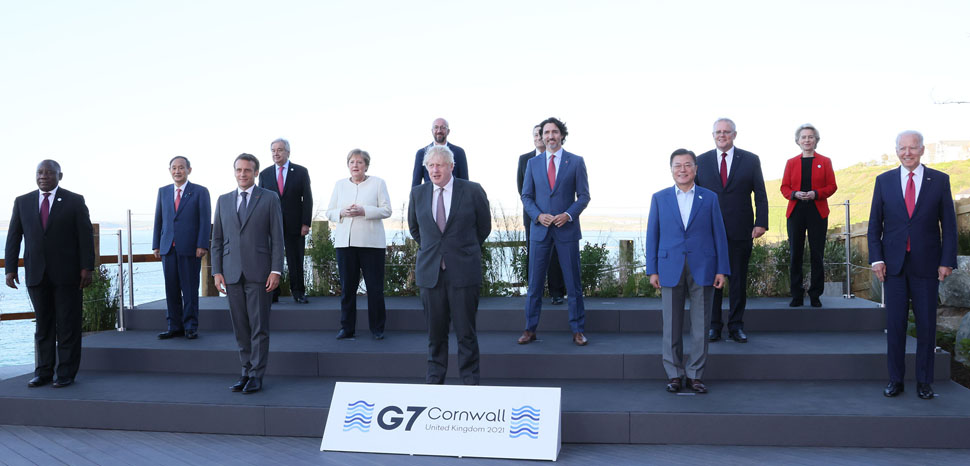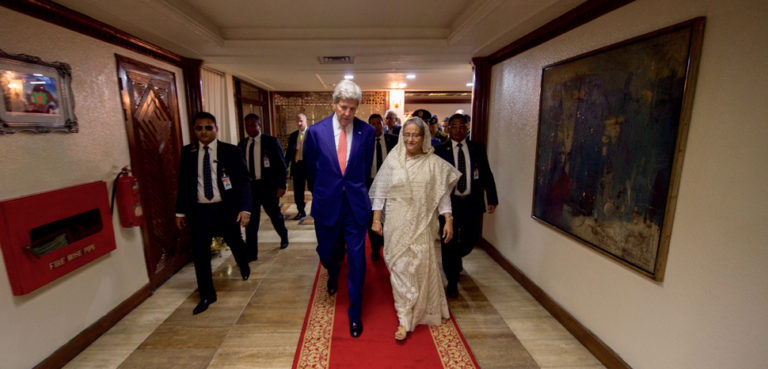At the G7 Summit in Cornwell in early June, G7 leaders agreed on a new infrastructure initiative spearheaded by the US called “Build Back Better Word” (B3W), aiming to “help narrow the $40+ trillion infrastructure need in the developing world.” In mapping out which strategic regions to invest in, Southeast Asia’s unique characteristics merit close consideration, as the area will be pivotal to the B3W’s successful execution.
Evidently, Southeast Asian countries fit the B3W plan because most countries in this region can be classified as ‘developing,’ and are strongly in need of infrastructure investment. This dovetails with the B3W’s mission statement of seeking “a values-driven, high-standard, and transparent infrastructure partnership” in the developing world. Southeast Asian countries have long enjoyed infrastructure investment from a variety of partners. Yet, due to their tremendous need, there are still insufficient supply to fulfill these countries’ demand. Indeed, states like Cambodia, Laos and Vietnam are all infrastructurally underdeveloped, despite having received ample investment for many years.
On the one hand, corruption and more generally weak governance is to blame. On the other hand, problems from investors have been hindering infrastructure development in Southeast Asia. Most notably, China, for instance, is notorious for its low-quality, non-transparent, and environmentally harmful projects in recipient countries, including Southeast Asian ones. One of the most infamous Chinese infrastructure projects in the region is the Cat Linh-Ha Dong railway in Vietnam. First launched in 2011, the railway has yet to become operational, owning to prolonged delays and overspending, which has stirred up public distrust among Vietnamese people regarding Chinese investment.
In the same vein, Indonesia is also wary of the negative impacts of investment from China. The Jarkata-Bandung high-speed rail – a major project in Indonesia that is funded by the Belt and Road Initiative (BRI) – has recently been delayed owing to government concern over financial and environmental issues. Although it is expected to become operational by the end of 2022, the project is still rife with potential risks that Indonesia may have to grapple with when considering future collaboration with China. In the future, the Jokowi administration will undoubtedly think twice about Indonesia-China infrastructure cooperation.
Another country concerned about China-funded infrastructure projects is Myanmar. As the dominant investor in Myanmar’s infrastructure development, China’s presence is controversial. The China-Myanmar Economic Corridor has raised deep concern in the country over a lack of transparency, disruption of local natural systems, and poor planning. The clearest example is the $3.6 billion Myitsone Dam, a gargantuan project suspended in 2011. The dam’s construction was criticized for bringing detrimental consequences to local people’s lives and Myanmar’s national security.
Meanwhile, Southeast Asian countries see the US more positively compared to China. The latest survey conducted by a Singaporean think tank ISEAS Yusof-Ishak Institute indicates that 61.5% of respondents are in favor of aligning with the US over China if forced to pick sides. Given this, Washington has a significant edge over China in normative terms. All of these circumstances are conducive to the US plan to become one of the major infrastructure investors in Southeast Asia.
Next, thanks to its location, Southeast Asia is geopolitically vital for the United States’ Asia strategy. Situated at the heart of the Indo-Pacific, the region has been witnessing great power competition in recent years. For the US, much is at stake in its foreign policy in Southeast Asia. Besides two US traditional allies, Thailand and the Philippines, there are key partners such as Singapore, Vietnam, and Malaysia to consider. Importantly, China has been increasingly aggressive in the South China Sea, posing a threat to the regional security. In these respects, if the US wants to maintain its leadership in Asia, it must engage more closely with Southeast Asian nations.
Four years of Donald Trump’s isolationist foreign policy saw Washington’s political influence in the region substantially decline. However, President Joe Biden is now going in the opposite direction by adopting multilateralism and forging relations with both traditional and potential partners, including Southeast Asian ones, in order to regain US credibility in the region. Yet, notwithstanding these goals, President Biden has not advanced any clear Southeast Asian agenda, especially an economic one. Though the United States launched the Blue Dot Network in 2019 to promote global infrastructure development, it has been not able to boost its investment in Southeast Asia, illustrated by the network’s relative ineffectiveness thus far. An ongoing lack of concrete steps to reestablish a US presence in Southeast Asia would be disastrous for Washington over the long-term.
Given the current regional landscape, it behooves the US to cooperate with Southeast Asian nations in a more meaningful way to develop a stronger US-funded infrastructure network. As mentioned previously, China is one of the region’s largest infrastructure investors, implying that the United States must use its own infrastructure investments to counter-balance Beijing’s influence. Granted, the United States is still seen as the most crucial regional actor, but in terms of infrastructure investment, it is lagging behind China. This is harmful for the United States and good for China.
Under the Belt and Road Initiative, China has been investing massively in the region. As for the vitality of infrastructure in economic growth, China is using this instrument to make the whole region reliant on its funding; and then leveraging its position in a way that directly threatens US interests. Therefore, it is imperative for the Biden administration to take Southeast Asia into account when executing the B3W, as the scheme may serve as a harbinger of a clearer Southeast Asian economic agenda. If this comes to pass, regional players will by no means be reluctant to embrace Washington’s new infrastructure initiative.
Additionally, over the long run, helping the region to develop sustainable, high-quality infrastructure will be economically beneficial for the United States. Becoming the dominant infrastructure donor in Southeast Asia will give the United States an upper hand over China, as it lays a solid foundation for the United States’ regional economic activities. Southeast Asia is indeed a highly lucrative market, with more than 650 million people and a combined GDP of approximately $3 billion. Moreover, ASEAN countries are planning to develop an economic community as a part of its 2025 vision. Adopting this vision, they envisage a highly integrated and cohesive economy with strong connectivity and sectoral cooperation. As such, major economies like the United States are welcome to engage with Southeast Asia, especially in infrastructure investment. To this degree, Southeast Asia matters much for the US, and vice versa.
After four years of pursuing a confrontation and unilateralist foreign policy, the United States is now adopting a fundamentally different one to repair its tarnished image. The B3W thus is a praiseworthy step for the return of the United States as a global leader. To ‘build back better’ as it desires, the Biden administration must first identify strategic areas to invest in, then connect them to a sphere of influence. Southeast Asia has to be one of them. Using infrastructure leverage in this region will not only enable the US to contain China’s rising assertiveness but also offer Washington many opportunities to gain economic benefits from Southeast Asian markets. In a nutshell, Southeast Asia plays a critical role in realizing the B3W, and the initiative’s success is good for the US and good for the region.
The views expressed in this article are those of the authors alone and do not necessarily reflect those of Geopoliticalmonitor.com




